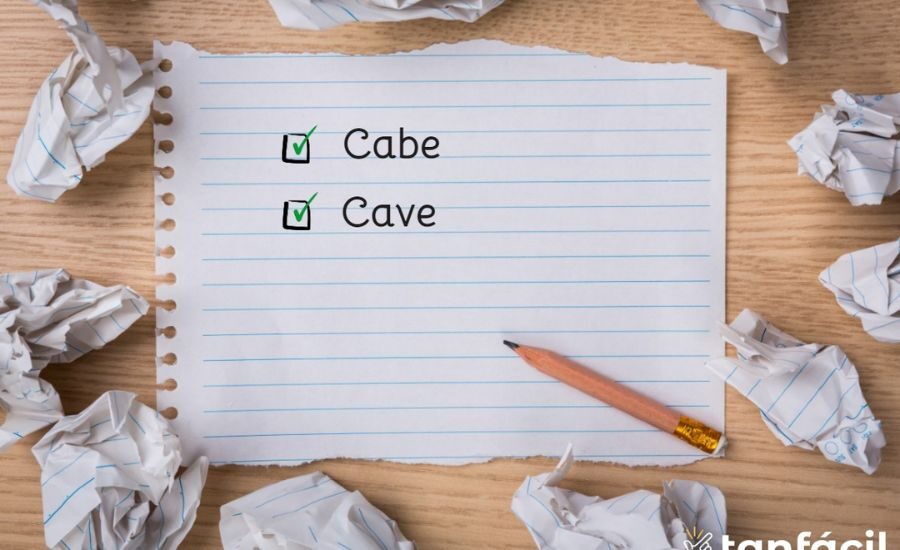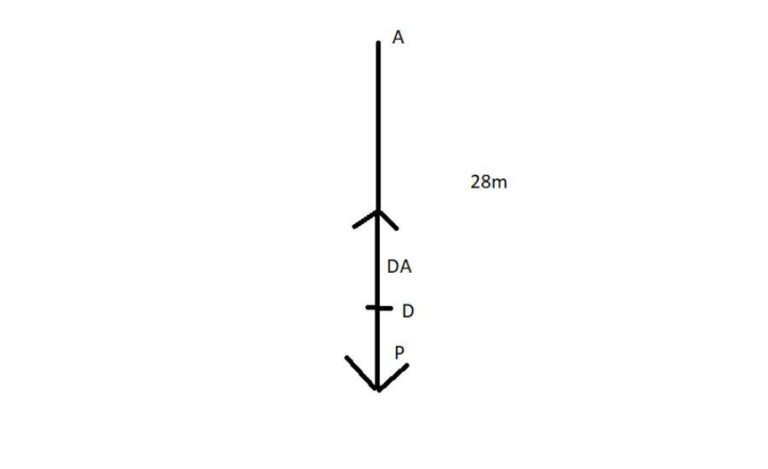Https://Tanfacil.Net/Educacion/Como-Se-Escribe-Cabe-O-Cave-2821.Html, Grammar & More
https://tanfacil.net/educacion/como-se-escribe-cabe-o-cave-2821.html : The Spanish dialect is wealthy and full of life. This dialect offers a distinctive kind of phonetic travel to its learners and devotees. Be that as it may, that rises is the adjust utilization of “cabe” and “cave.” These words, in spite of the fact that comparable in appearance, are exceptionally diverse in meaning and application. We will conversation around in this article the rectify settings wherein “cabe” and “cave” must be utilized, diving into their linguistic parts, implications, and illustrations. Such is the comprehensive direct to grant clarity and offer assistance you in acing these angles of Spanish grammar.
The Significance of Setting in Spanish Grammar

Understanding the setting is the key to acing the rectify utilize of “cabe” and “cave.” Fundamentally, “cabe” alludes to something that bargains with fitting or its comparing appropriateness, whereas “cave” alludes to burrowing or examination more profound. A off-base utilization would result in either disarray or miscommunication, in this way setting esteem on utilizing it correctly.
Tips for recalling the redress usage
To keep “cabe” and “cave” straight, consider making a memory helper. Keep in mind that “cabe” is from the verb caber, meaning to fit. Picture an protest cozily fitting into a space.
For “cave,” think of it as related to the past or something that has as of now happened. Visualize a cave where time stands still, speaking to its association to the past tense.
Practice makes idealize! Type in straightforward sentences utilizing both terms in diverse settings. This will strengthen your understanding and offer assistance you review their implications effortlessly.
Additionally, attempt partner each word with pictures or scenarios pertinent to your life. Individual associations frequently make data adhere superior than theoretical concepts.
Understanding the contrast between
Understanding the distinction between “cabe” and “cave” is basic for compelling communication in Spanish. At to begin with look, these two words might appear comparable, but they serve particular purposes.
“Cabe” is a conjugated frame of the verb “caber,” meaning to fit or to have space for something. It’s utilized when talking around whether something can physically fit into a certain space.
On the other hand, “cave,” which comes from the verb “caer,” alludes to falling or dropping down. This word regularly shows up in settings where gravity plays a part, showing development towards a lower position.
Similar words and their implications (e.g. caber vs cabezar)

When investigating the Spanish dialect, it’s interesting to experience words that appear comparative however carry diverse implications. Take “caber” and “cabezar,” for instance.
“Caber” alludes to fitting or having sufficient space for something. It’s regularly utilized in settings where you examine whether an protest can fit into a specific zone. For illustration: “No cabe en la caja” deciphers to “It doesn’t fit in the box.”
On the other hand, “cabezar” is less common and regularly relates to heading or coordinating oneself towards something. It passes on a sense of development or purposeful or maybe than simple spatial capacity.
Common Botches and How to Maintain a strategic distance from Them
1. Blending Up the Meanings
- A visit botch is befuddling the implications of “cabe” and “cave” due to their comparable sounds. Remember:
- Use “cabe” when alluding to the capacity to fit something into a space.
- For case, composing “Cave el libro en la mochila” instep of “Cabe el libro en la mochila” is off base. The adjust sentence implies “The book fits in the backpack.”
Inaccurate Verb Forms
- Another botch is utilizing the off-base verb shape. Guarantee you utilize “cabe” for display tense explanations and “cave” for subjunctive or basic settings. For instance:
- Incorrect: “https://tanfacil.net/educacion/como-se-escribe-cabe-o-cave-2821.html.”
- Correct: “Es importante que el libro cabe en la mochila.” (It’s imperative that the book fits in the backpack.)
Confusing Show and Subjunctive Moods
- Confusion regularly emerges when choosing between display tense and the subjunctive disposition. Remember:
- “Cabe” is utilized in the show tense (e.g., “El libro cabe en la mochila”).
- “Cave” is utilized in the subjunctive temperament (e.g., “Es importante que él cave con cuidado”).
- To dodge these mistakes, distinguish whether you are talking about a truth (show tense) or making a proposal or communicating a condition (subjunctive mood).
Practice works out for encourage understanding

To cement your get a handle on on “cabe” and “cave,” hone is basic. Begin with straightforward fill-in-the-blank sentences. For occasion, “En la caja __________ muchos libros.” Is it cabe or cave?
Next, make your claim sentences utilizing each word in setting. This will offer assistance fortify their implications. Attempt composing around circumstances where something fits or doesn’t fit.
Another compelling work out is to change a list of things into sentences that require the redress verb frame. Think creatively!
Challenge yourself by finding cases in books or articles and recognizing which term is utilized accurately. Locks in with substance makes a difference extend understanding altogether.
Facts :
- “Cabe” comes from the verb caber, meaning to fit or be able to fit in a space. It refers to the ability of something to fit into a space physically.
- “Cave” is the subjunctive form of the verb caer, meaning to fall or to drop down. It is used in situations where something is falling or moving down.
- A common mistake is confusing “cabe” and “cave” because they sound similar. The right word depends on whether the context involves fitting into a space (“cabe”) or an action of falling or dropping (“cave”).
- The subjunctive mood uses “cave” while the indicative mood uses “cabe.”
- Memory tricks to remember the difference: for “cabe,” imagine something fitting into a space, and for “cave,” think of a cave (a space associated with the past or a state of being still).
- Common mistakes include mixing the verbs up or using incorrect verb forms.
- The article offers practice exercises to help distinguish between “cabe” and “cave.”
Summary:
The article discusses the difference between the Spanish words “cabe” and “cave”, which often confuse learners due to their similar pronunciation. “Cabe” is the form of caber, meaning to fit or be capable of fitting, while “cave” is the subjunctive form of caer, meaning to fall. The correct usage of these words depends on the context: “cabe” refers to fitting something into a space, while “cave” refers to a falling action. To avoid confusion, learners are encouraged to use visual aids, practice exercises, and memory techniques. The article also clarifies common mistakes, such as using incorrect verb forms or confusing the indicative and subjunctive moods.
FAQs:
- What is the difference between “cabe” and “cave”?
- “Cabe” means “fits” and comes from the verb caber, used in the indicative mood to describe something fitting into a space. “Cave” comes from caer and means “fall” or “drop,” used in the subjunctive mood to describe an action of falling.
- When should I use “cabe” and when should I use “cave”?
- Use “cabe” when you are referring to something fitting into a space (e.g., “El libro cabe en la mochila” – The book fits in the backpack). Use “cave” in the subjunctive mood when talking about something that should happen, like in suggestions or conditions (e.g., “Es importante que él cave con cuidado” – It’s important that he digs carefully).
- How can I remember when to use “cabe” and “cave”?
- Remember: “Cabe” is about fitting into a space, like a puzzle piece. “Cave” is related to the past or actions of falling, like a cave where time stands still.
- What are some common mistakes to avoid?
- A common mistake is mixing up the meanings or using the wrong verb form. For example, writing “Cave el libro en la mochila” instead of “Cabe el libro en la mochila” is incorrect because the first implies falling the book into the backpack, while the second means the book fits into the backpack.
- Can you give examples of both words in sentences?
- “Cabe” example: “Este libro cabe en mi mochila” – This book fits in my backpack.
- “Cave” example: “Es importante que él cave el hoyo cuidadosamente” – It is important that he digs the hole carefully.
For more Information About Education visit idealrular.com



